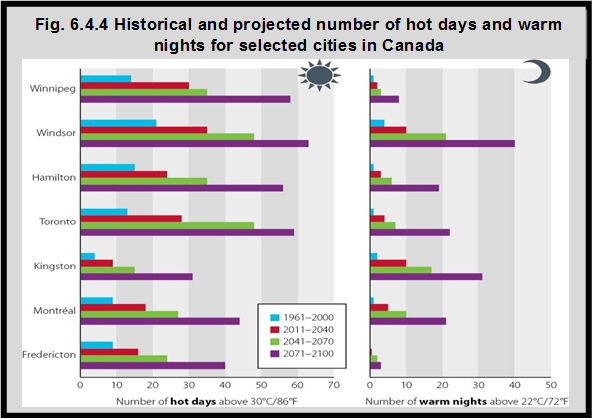Historical and projected number of hot days and warm nights for selected cities in Canada

Source: CICH graphic created using data adapted from Casati, B., 2010. Analysis of the daily minimum and maximum temperatures. Ouranos – Consortium on Regional Climatology and Adaptation to Climate Change, Montreal.
As a result of climate change, it is expected that heat waves will become longer, more frequent, and more intense in Canada.1
It is projected that the number of days with temperatures above 30°C in Toronto, Winnipeg and Windsor will double between 2011 and 2040.
1IPCC [Intergovernmental Panel on Climate Change] (2012): Summary for policymakers; in Managing the Risks of Extreme Events and Disasters to Advance Climate
Change Adaptation; Cambridge University Press, Cambridge, United Kingdom. https://www.ipcc.ch/pdf/special-reports/srex/SREX_FD_SPM_final.pdf-accessed July 24, 2017.
Implications
Young children are especially vulnerable to heat waves because of the amount of time they spend being active outside and their dependence on caregivers for their safety and well-being.2,3
2Xu, Z., Etzel, R.A., Su. H., Huang, C., Guo, Y., & Tong, S. (2012). Impact of ambient temperature on children’s health : A systematic review. Environmental Research, 117, 120-131
3Ebi, K.L., & Paulson, J.A. (2007). Climate Change and Children. Pediatric Clinics of North America, 54, 213-226.
